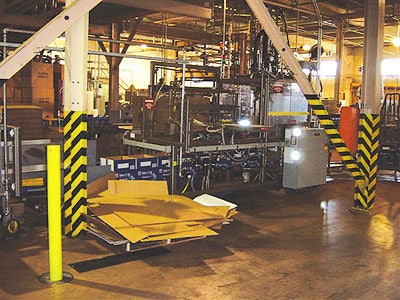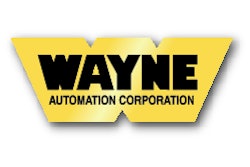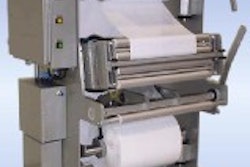After enduring years of excessive corrugated waste caused by faulty case erectors and partition inserters, San Ramon, CA-based ChevronTexaco Global Lubricants Co. decided it was time to trash the troublesome equipment.
The old erectors and inserters were built with excessively tight tolerances. Any variations in the size or shape of corrugated cases would cause jams that mangled the corrugated board. Just over a year ago, the company decided to replace the old units at three of its packaging facilities, each receiving a new case erector and a new partition inserter from Wayne Automation (Norristown, PA). The change resulted in a drop from about 12% (nearly 50ꯠ cases/year) to less than 1/8 of 1% corrugated waste.
“You could just walk through each plant and see the pile of wasted corrugated sitting there by the machine, and you’d realize that something just wasn’t quite right,” says Darryl Laxo, senior engineer of packaging machinery for then Chevron Products Co. “We started looking around to see what we could do to correct the situation and looked at probably six different machines that were in the market. We even saw several of them in plant operations. A big selling point with Wayne, even though they were a bit more expensive, was their guarantee that there would be no more than 1/8th of 1-percent waste. When you’re looking at 12-percent waste and you see that [potential improvement], you think, ‘hey, that’s a considerable payback.’”
The cases, which contain six 1-gal high density polyethylene bottles of engine oil, measure 143/16”Wx15½”Lx12¾”H.
In the process of going from the old case erectors and partition inserters to the Wayne machines, Chevron changed the partitions for the case from an “omni” type (six-compartment partition) to an “H” type (two-compartment partition). This would make it easier for existing drop packers to line bottles up with the compartments when dropping them in.
In the plants
“The first thing we noticed once we put in the new machines is that we could walk around the plants and say, ‘where’s the waste?’ There isn’t any. Everybody seems quite happy with the decision to invest in the Wayne machines,” Laxo says.
The Charleston, SC-based plant chose the PC-16/26RF case erector due to its right-angle magazine, which better fits in limited floor space. The Port Arthur, TX, and Richmond, CA, facilities both selected CE-15/22TAB case erectors with in-line magazines. All three plants opted for SF-400/B partition inserters.
Running 18 to 20 cases/min, the new machinery is expected to pay for itself in three years, Laxo says. He continues, “They haven’t paid for themselves yet, but they’re certainly getting there.”
Knocked-down cases are stacked on the edge of a hopper. The case former is equipped with vacuum cups that take one blank at a time out of the hopper, then pull it through a gate-and-cam arrangement that opens the box to its rectangular configuration. As the bottom two minor flaps are knocked into position, the box is moved forward on the machine. Plows push the two major flaps down.
A Nordson (Duluth, GA) hot melt machine injects glue onto the minor flaps to hold them together. The case then discharges onto a conveyor that leads to the inserter. The corrugated insert blanks are stacked vertically on a horizontal hopper. A vacuum cup grabs one insert blank, pulls it back, and bends it 180?. The formed partition is pushed forward into the insert position. A grabber with vacuum cups comes down and grabs the partition, opens the end flaps, and inserts it into the case. The assembled shipper is then conveyed to the drop packer.
Another feature of the Wayne equipment that appealed to Chevron was the sensors that are placed down the length of the machines. If something doesn’t occur when it’s supposed to, the sensors identify the problem and shut the machine down. This feature cuts down dramatically on jamming and corrugated damage. An operator can then consult the built-in diagnostics that identify the problem, address it, and restart the machine.
Maintenance
Representatives from each plant went to Wayne’s facility to observe the Factory Acceptance Tests (FAT) for their machinery, Laxo says. While they were there, they also trained in operation and maintenance of the units.
“In the first test of the machinery we ran, some of the corrugated Wayne received had either been out in the rain, or set out in the weather,” Laxo says. “Somehow it managed to get warped while it was waiting for the test. It was a good test because, in spite of the deteriorated condition of the corrugated, the machine ran properly.”
The Wayne units were shipped to the plants and installed a little more than a year ago. In all cases, the machinery was operational and ready for production start-up within two days of being installed. According to Laxo, Wayne’s technicians were very helpful and knowledgeable, facilitating installation.
Any blame for line inefficiency can no longer lie with the case erectors and partition inserters, Laxo says. The waste and line bottlenecks have shifted to the case packers. “They will be addressed in ChevronTexaco’s continuing effort for improved efficiency!” he says.






























